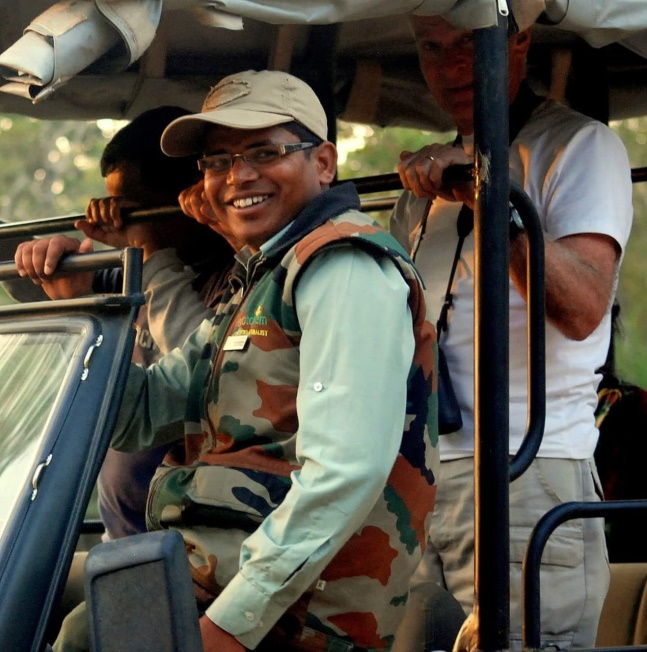K. Shanmugakumar was brought up on a tea estate in Conoor in Tamil Nadu and today is the Deputy Chief Naturalist at Evolve Back in Kabini since 2013.

I studied plant biology and bio – technology as a student, but it was my project at university on “The status of the Elephant Corridor linking Mukkurthy National Park and the Eastern Ghats” that inspired my love for the jungles and desire to work in for biodiversity conservation.
What do you see as your role as a naturalist
My goal is to educate our guests about the role of biodiversity and conservation in all our lives. The key is getting them to understand their own surroundings rather than create unnecessary hype about high profile creatures. I love to see that my regular visitors go back carrying back the conservation message , which they share with their family and friends. I also devote time to showcasing the lodge’s eco-practices and how their visit is playing a major role in conservating the landscape and supporting our neighbours. I believe telling stories make a greater impact rather than doing endless presentations, and so I tell stories every day to young and old.
Most memorable experience with your guests?
When I first started there was group of party goers travelling from Bangalore, probably tech sorts. They were not very keen or interested in wildlife, but I was trying to guide them on what should have been an enjoyable monsoonal safari. They were not interested till I finally shared some incredible facts about trees, in particular the fig trees and the entire ecosystem that is dependent on this fabulous living being. They were amazed and became animated, having never realised a single tree’s role in everyone’s lives. Today most of them, now with their own families, have became a regular visitor to Kabini. Now that is a triumph – and makes me really satisfied as a naturalist. I have done my job.
What is your favourite siting in the park?
Large herds of elephant congregation on the bank of Kabini during the hot summer months is a huge hit but really only happens every three to four years. It’s also attracts lots of birds in dry season especially migratory birds, when the water level change dramatically, and as a passionate birder I love to watch these too.
What has been causing all the stir over the last five years is a melanistic black leopard, a real rarity – and this has had the photographers out more than ever.
What is the future for naturalists in India?
I would like to see the professionalization of naturalists with courses to achieve higher level degrees in all the state universities and affiliated colleges. This would create lots of positive response from new generations of students and create better quality job opportunities.
The future of our nature resources does not solely rest on the backs of researchers or scientists, but on naturalists too, because we are coal face with the general public, who make the complex natural world into simple stories, so it is understood by the common man. That changes a society for the better.






